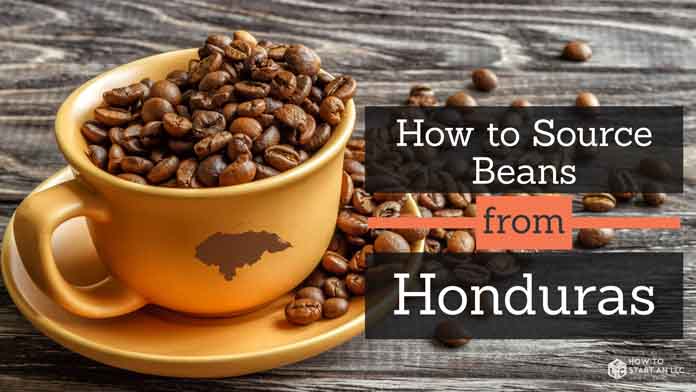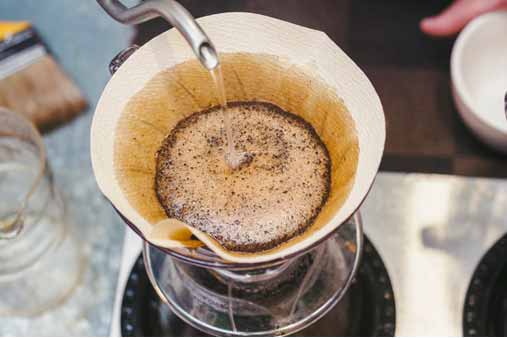How to Source Coffee from Honduras
Navigating the ins and outs of coffee sourcing can feel like an overwhelming and complicated process.
This guide summarizes what’s involved — and what to look for — when buying coffee beans from Honduras so you can make an informed decision for your roastery.
Recommended: Read our full, in-depth How to Start a Coffee Shop Business guides, inspired by coffee professionals, they will help make your coffee dreams real, from sourcing beans to hiring baristas, choosing the best POS system, forming an actual company, and everything in between.

Why Honduras?
While Honduras has less-fertile soil than its Central American neighbors, coffee is one of its largest exports. In the early 2000s, Honduras emerged as a prominent producer of quality, commercial blend coffees with more than 100,000 families farming coffee within the country.
Yet, its path to success wasn’t easy. In the mid-1990s, Honduras suffered a disastrous hurricane as well as a period of coffee smuggling that negatively impacted its coffee market. While it tackled those challenges, Honduras also needed to change its coffee taxation policies in the late 20th century before it could become a major coffee producer. Then, in 2000, the founding of the Honduran Coffee Institute (IHCAFE) started to change perceptions of Honduran coffees by proactively promoting its product and providing farmers with training and loans for equipment.
Today, Honduras grows coffee within six regions — ranging from the Copán, whose beans work well in blends, to Comayagua, whose beans have citrusy, creamy notes. Washing is the most common processing method in Honduras and, because the country’s high rainfall makes air-drying difficult, farmers typically use solar dryers or polytunnels to dry their beans.
Honduras' Growing Regions
Here’s a guide to the key characteristics found in Honduras’ main coffee-growing regions:
Copán
- Flavor Profile: Copán, a notable coffee-growing region according to the Honduran Western Coffee Geographical Indication, has a reputation for aromatically sweet and bold-bodied coffees. While its weather can vary in humidity and temperature more than other coffee-producing regions in Honduras, it generally remains cooler.
- Processing Format: Washed
- Average Harvest Season: November to March
Agalta
- Flavor Profile: With a tropical climate and altitudes of 3,600 to 4,500 feet, this region produces fruit-forward coffees with a chocolatey aroma.
- Processing Format: Washed
- Average Harvest Season: December to March
El Paraíso
- Flavor Profile: This region’s reputation experienced a major boost after Oscar Daniel Ramirez Valerio won the “Cup of Excellence” for his Parainema beans in 2017. Growing at between 3,200 and 4,500 feet above sea level, El Paraíso’s coffees produce a citrusy flavor with a smooth, creamy finish.
- Processing Format: Washed
- Average Harvest Season: December to March
Montecillos
- Flavor Profile: Colder nights mean slower ripening times in this region, which produces coffee with a sweeter flavor than some of its counterparts. Montecillos-grown coffees offer flavor profiles that range from citrus to stone fruit to caramel with a slightly acidic, but velvety body. This region also is home to Honduras’ first origin denomination — Cafe de Marcala — due to the coffee’s worldwide recognition.
- Processing Format: Washed
- Average Harvest Season: December to April
Opalaca
- Flavor Profile: The Copan region’s eastern neighbor, Opalaca has a slightly higher altitude that promotes more tropical notes in its coffee as well as a hint of acidity.
- Processing Format: Washed
- Average Harvest Season: November to February
Comayagua
- Flavor Profile: This region is Honduras’ central coffee-producing region and, according to IHCAFE, had the highest yield in 2016. Truly the best of both worlds, Comayagua coffees combine citrus and sweet notes with a bold, creamy body.
- Processing Format: Washed
- Average Harvest Season: December to March
Popular Coffee Farms in Honduras
Here’s a summary of several popular farms in Honduras. While we don’t work with these producers directly, these examples offer insight into the common practices of farms in this country.
Finca Las Botijas
- Jose Abel Girón Dubón won third place in the 2018 “Project Origin: Best of Honduras Washed Competition” with this farm’s Pacamara coffee, which impressed the judges based on its “complexity, juicy and velvety mouthfeel, and fruity flavours.”
- Located in the Comayagua region, this three-acre, family-owned-and-operated farm produces high-quality specialty coffee.
Hacienda Montecristo
- Located in the Copán region, this farm started growing coffee more than 100 years ago in 1916.
- Beyond producing rainforest-certified beans, it grows high-quality coffees of the Pacamara, Parainema, Maragogipe, and Caturra varieties, among others.
Finca La Cueva - El Naranjo
- This walkable, visitor-friendly farm grows Bourbon, Catuai, and Geisha coffees in the Montecillos region. It’s definitely one to watch given its production of the highly prized Geisha varietal.
- Operated by three generations of one family since its inception, this farm’s high-altitude location makes it easy to grow coffee.
Key Differences Among Origin Countries
The main differences between each coffee-producing country include the soil, elevation, anOn farms with higher soil fertility, coffee plants can produce larger yields and better defend themselves against disease — especially important when growing Arabica beans, which are susceptible to diseases like leaf rust. Yet, a soil’s fertility largely depends on the amount of volcanic ash, clay, and/or limestone it contains. Volcanic ash, for example, adds valuable minerals, such as fd temperature associated with farms growing coffee plants.
Fertile soil is essential for producing high-quality coffee. eldspar, quartz, magnesium, cristobalite, and tridymite. Similar to the farming of wine grapes, a soil’s nutrient content plays a large role in a plant’s health and the flavor profile of its fruit.
“In order for a coffee plant to produce 100 pounds of green coffee (1 quintal), it must extract from the soil approximately 1.45 kilograms of nitrogen, 0.28 kilograms of phosphorous, and 1.74 kilograms of potassium.” – Luis Alvarez Welchez, manager and agronomist, ProSuelos Initiative
A farm’s altitude, in addition to its soil conditions, directly impacts the flavor profile of coffee grown there. This is because altitude affects the temperature in which coffee plants grow and temperature can boost or hinder a plant’s ability to absorb nutrients from the soil. Moreover, coffee plants growing at higher altitudes and lower temperatures also can photosynthesize longer. This allows the plant to metabolize nutrients in the soil and produce bigger, healthier cherries. The end result is a desirable hard coffee bean with a high sugar content. In contrast, plants that absorb fewer nutrients due to poor soil and/or hotter growing temperatures tend to produce softer beans with low sugar content.
There are, however, exceptions to this general rule. Hawaiian coffee grows at a relatively low elevation, but, due to the island chain’s location far north of the equator and ample shade to guard plants from the sun, it produces high-quality coffee at a lower altitude.
Final Considerations
If you plan to buy your coffee beans from an importer, the process is fairly straightforward. Contact your potential importer to set up a “cupping” event to sample their coffees and then work with them to place your order.
If you prefer to source beans directly from a coffee farm, there’s a bit more work ahead of you. First, you must travel to the farm(s) in order to “cup” their coffee before you make an order. While this “cupping” trip will enable you to start developing relationships with your farmer(s), you will need to hire a translator to accompany you unless you speak the local language.
If you decide to buy coffee beans from a specific farm after your “cupping” trip, you must then connect with an importer to help you with the shipping and handling of your coffee. Why? Because importers have expertise not only in managing customs and duties imposed on coffee shipments, but also on how to properly transport green coffee beans across borders based on the specific varietals and regions from which you order.
When selecting an importer, keep these considerations in mind:
- Storage is a major factor in ensuring the quality of your beans upon arrival. Do some research about the practices of your importer’s transportation services, including temperatures during transport, shipping time, and handling of your product.
- Minimums are another factor in ordering for your business. If an importer has a larger minimum than you are able to roast or store in a short amount of time, you could end up wasting money and product.
- The frequent availability of beans from specific origins also is important. Ensure you’re able to use a variety of coffees and origins provided by your importer as lots can differ wildly depending on season, climate, and politics.
- Some importers also can help you ensure you buy fair trade coffee for your business. For example, Crop to CupTM Coffee Importers, Pachamama Coffee, and Copan Trade LLC are just a few importers offering this service.
Pro Tip: Ask around in your community and online before choosing an importer to gain an understanding of their practices.

